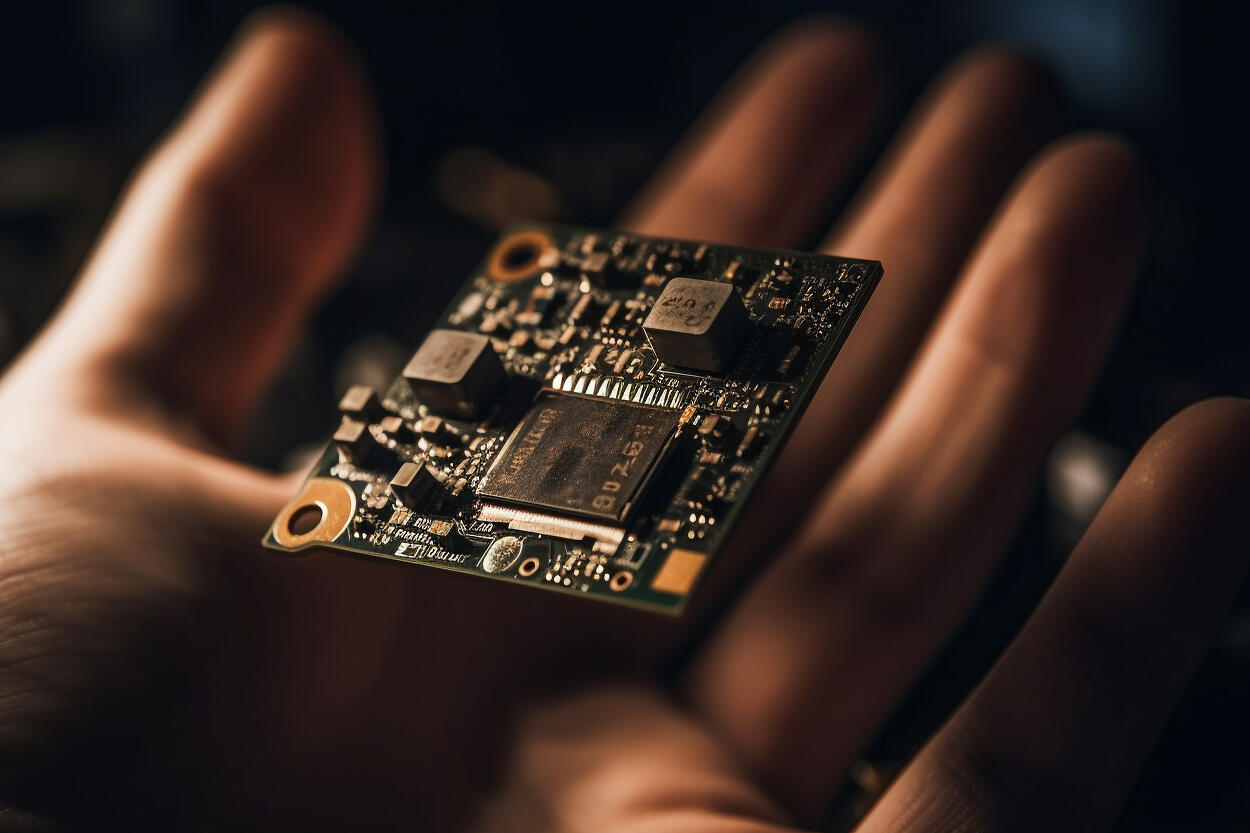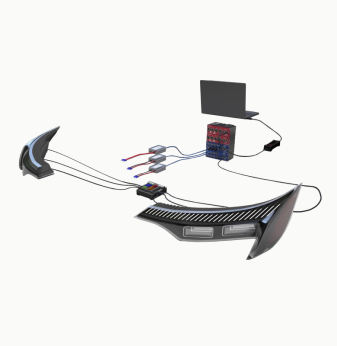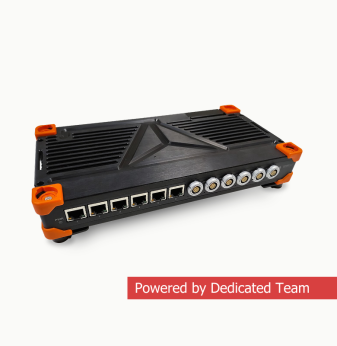From Rigid Boards to Living Circuits: The Rise of Flexible Embedded Electronics

Embedded electronics used to mean rigid boards, sharp edges, and fixed shapes. But as technology moves closer to the human body — in smart wearables, prosthetics, and medical implants — rigidity has become a limitation.
People don’t move like machines. Our bodies bend, twist, and stretch. To build electronics that truly integrate with us, engineers are rethinking materials, circuit architectures, and even how embedded systems are manufactured.
Enter the era of flexible and stretchable embedded electronics — circuits that behave like skin, stretch like muscle, and process data like traditional hardware. This fusion of materials science and embedded design is creating a new generation of bio-integrated systems that can monitor, heal, and even interact with our bodies in real time.
The shift from flexible PCBs to soft systems
Flexible printed circuit boards (FPCBs) have been around for decades — used in foldable displays, sensors, and compact devices. But the new frontier goes beyond flexibility: stretchability.
Stretchable electronics can expand and compress without breaking electrical continuity, allowing them to conform to skin, organs, or tissues.
In wearables, this means smart patches that follow body movement naturally. In implants, it allows devices to coexist with living tissue without causing stress or rejection.
The transformation is not just mechanical. These systems combine flexible substrates, conductive polymers, embedded microcontrollers, and sensors into monolithic, soft architectures that maintain electrical integrity even under continuous deformation.
Key materials and design principles
1. Stretchable substrates
Traditional PCBs rely on rigid FR4 materials. Stretchable systems use elastomeric substrates such as PDMS (polydimethylsiloxane), TPU (thermoplastic polyurethane), or Ecoflex.
These polymers can elongate up to 200% while remaining transparent, lightweight, and biocompatible.
2. Conductive materials
Instead of copper traces, stretchable circuits use conductive inks or composites — silver nanowires, graphene, or carbon nanotube networks.
When stretched, these materials deform elastically instead of cracking, maintaining conductivity even after thousands of cycles.
3. Island–bridge architecture
Microchips and rigid components are mounted on tiny “islands” connected by serpentine interconnects — flexible bridges that absorb mechanical stress.
This design distributes deformation, protecting sensitive silicon dies from strain.
4. Embedded microcontrollers and sensors
Flexible systems integrate miniaturized embedded modules: pressure sensors, ECG electrodes, accelerometers, micro-heaters, or optical emitters.
These components are bonded onto stretchable substrates with conductive adhesives, forming complete systems-on-skin capable of sensing and wireless communication.
5. Encapsulation and protection
For medical use, encapsulation layers isolate electronics from bodily fluids while allowing oxygen permeability. Thin biocompatible coatings (Parylene C, silicone) ensure safety and long-term durability.
The embedded architecture behind soft electronics
At the heart of every flexible device is a low-power embedded core — a microcontroller or SoC optimized for minimal heat generation and dynamic power scaling.
To handle constant motion and temperature changes, firmware is designed for adaptive sampling, energy harvesting, and wireless synchronization.
Common architectures include:
- ARM Cortex-M based SoCs for low-latency data processing;
- Bluetooth Low Energy (BLE) or NFC interfaces for wireless data transfer;
- FPGA-based sensor hubs in advanced medical devices requiring high timing precision;
- AI-enabled microcontrollers running lightweight neural networks (TinyML) for on-body inference.
In combination, they allow flexible devices to sense, compute, and communicate — all without compromising softness or comfort.
Applications transforming healthcare and wearables
1. Smart health patches
Disposable or rechargeable skin patches can monitor heart rate, blood oxygen, hydration, and stress levels continuously.
They bend naturally with the body and transmit real-time data to smartphones or cloud dashboards.
2. Implantable medical devices
Stretchable pacemakers, neural implants, and glucose monitors are emerging.
They use biocompatible materials to avoid immune response, and flexible antennas for wireless charging and communication.
3. Prosthetics and rehabilitation systems
Embedded stretchable sensors measure muscle tension or limb movement, providing feedback for prosthetic control and physical therapy.
4. E-textiles
Smart clothing integrates stretchable sensor threads into fabric — monitoring posture, temperature, or fatigue in athletes, patients, or industrial workers.
5. Soft robotics and bio-hybrid machines
Stretchable circuits enable robots that move like living organisms — powered by embedded soft controllers and distributed sensor networks.
Manufacturing innovations
Flexible electronics rely on specialized manufacturing techniques:
- Printed electronics: conductive inks deposited through inkjet or screen printing directly onto polymer films.
- Laser sintering: fuses nanoparticles to form smooth, flexible traces.
- Roll-to-roll processing: high-throughput production for flexible sensor films and wearable modules.
- Hybrid integration: combines flexible circuits with rigid chips using stretchable interconnects.
These methods allow scalable, cost-efficient production — bridging the gap between prototyping and mass manufacturing.
Engineering challenges and limitations
Despite rapid progress, several challenges remain before stretchable electronics become mainstream:
- Long-term durability: repeated stretching can still cause microfractures or delamination.
- Thermal management: heat dissipation is harder in soft substrates without metal cores.
- Miniaturization of rigid components: microcontrollers, antennas, and batteries remain relatively bulky.
- Power supply: thin, flexible batteries or energy harvesting systems are still in development.
- Regulatory approval: implantable electronics face strict medical certification requirements for safety and biocompatibility.
Each of these challenges is an active area of research. The next generation of materials — self-healing polymers, solid-state microbatteries, and graphene supercapacitors — promises to address them.

Designing for the human body
Building electronics that live on or inside the human body demands a different mindset.
Engineers must prioritize comfort, adaptability, and unobtrusiveness over sheer performance.
Mechanical compliance — the ability of the device to move with the skin — is now as important as processing speed.
Signal integrity must remain stable despite stretching, sweat, or motion noise.
Even user perception becomes a design parameter: devices must feel invisible, not foreign.
The combination of embedded intelligence and material empathy — technology literally designed to feel human — marks a profound shift in how we think about electronics.
The road ahead: merging biology and computation
As materials, sensors, and embedded systems converge, flexible electronics will evolve from passive monitors into interactive bio-interfaces.
Future devices may not just read biological signals but also stimulate or regulate them — for instance, triggering nerve regeneration or controlling insulin release.
By 2030, we can expect:
- Self-powered implants harvesting energy from motion or body heat;
- Fully biodegradable electronics that dissolve safely after use;
- Stretchable neural networks embedded directly into tissue;
- Hybrid organic–silicon systems combining computing and biology.
In this landscape, flexibility isn’t just a feature — it’s the defining principle of the next generation of embedded design.
AI Overview: Flexible and Stretchable Embedded Electronics
Flexible and stretchable embedded electronics merge material science and embedded design to create soft, body-compatible systems for wearables and implants.
Key Applications: health patches, medical implants, e-textiles, prosthetic sensors, soft robotics.
Benefits: biocompatibility, comfort, continuous monitoring, reduced invasiveness, adaptability to human motion.
Challenges: durability, thermal management, power supply, miniaturization, certification for medical use.
Outlook: by 2030, flexible and stretchable electronics will enable a new class of embedded systems that blend seamlessly with the human body — powering continuous healthcare and human–machine integration.
Related Terms: soft electronics, biocompatible circuits, flexible sensors, printed electronics, TinyML for wearables, body-integrated embedded systems.
Our Case Studies












